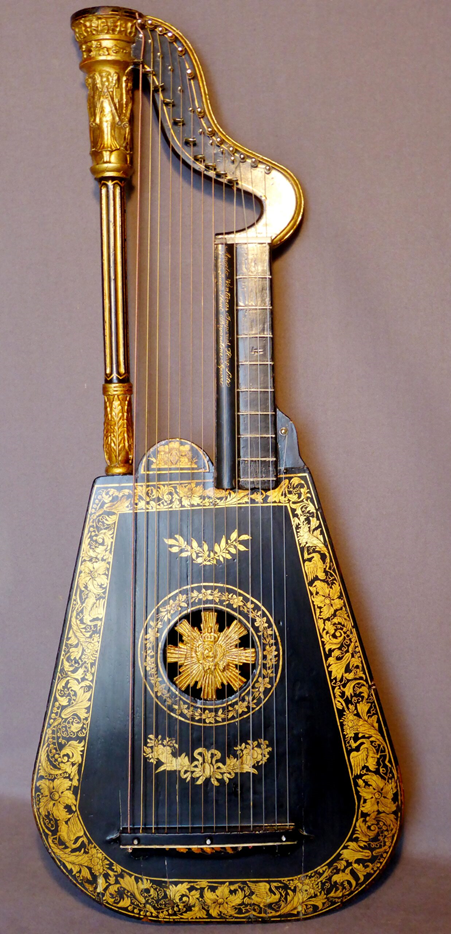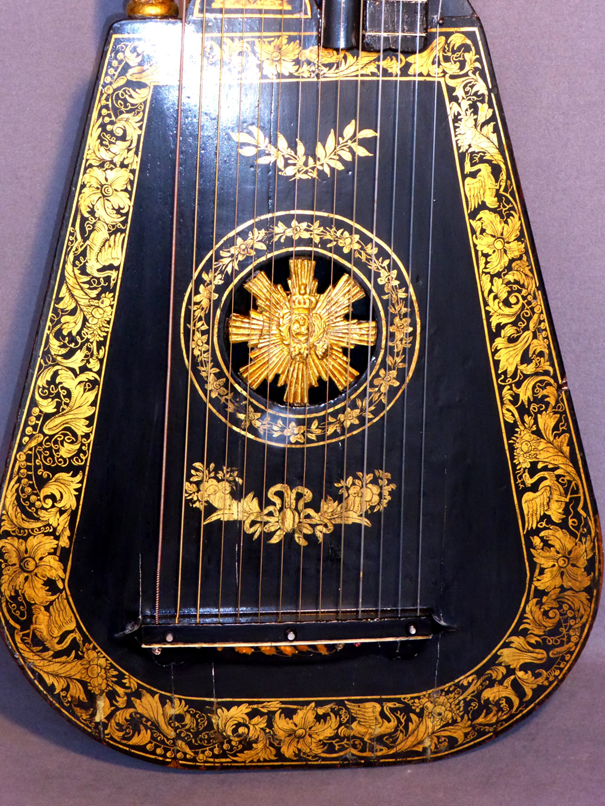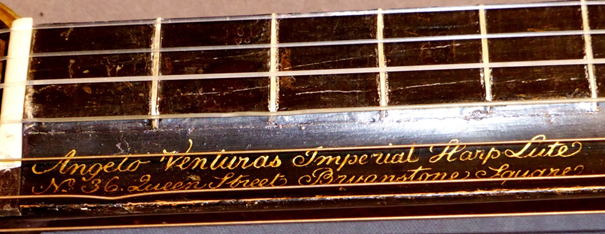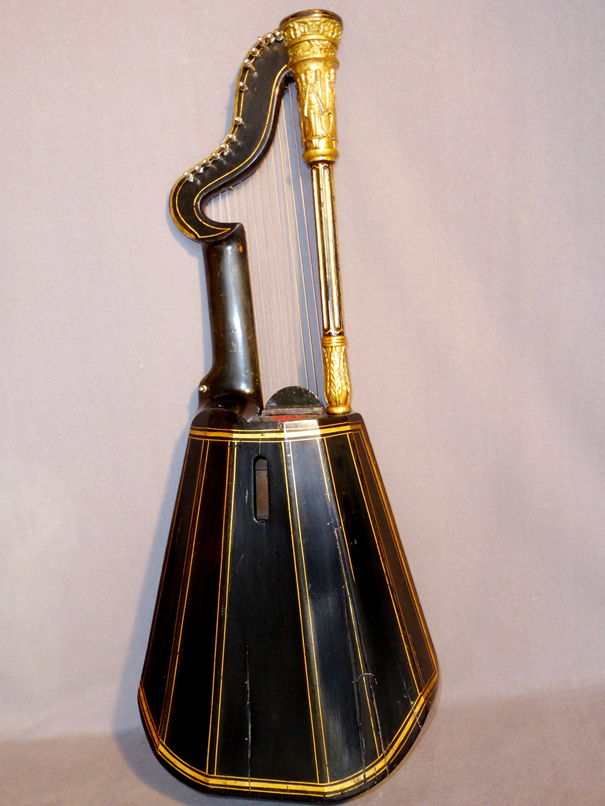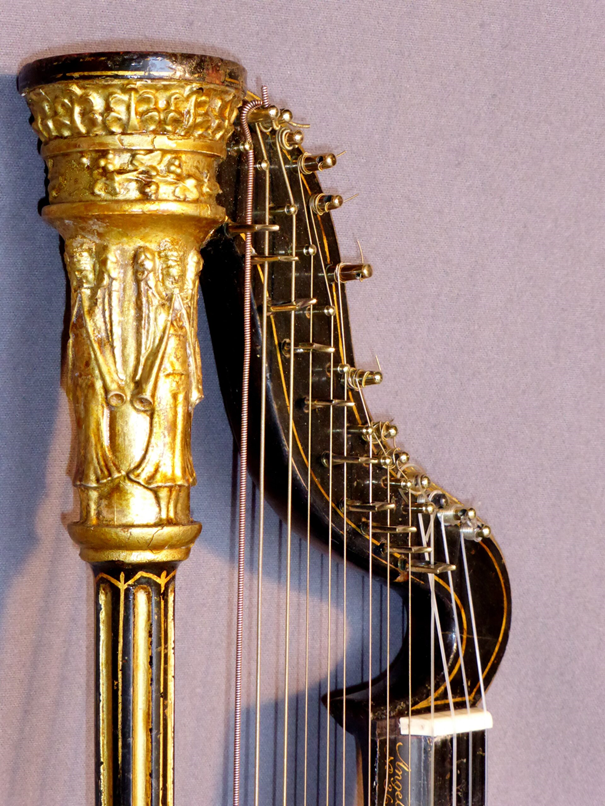HARP-LUTH by Angelo Benedetto VENTURA à LONDRE (1781-1856)
Signature along the fingerboard: “Angelo Venturas Imperial Harp Lute / N°36 Queen Street Brianstone Square”
Typical of the Anglo-Saxon aesthetic of the time, animated friezes and floral motifs obtained by transfer are applied on a black varnished background to all parts of the instrument.
Available in different models and different names, the harp-lute is a portable harp used at the beginning of the 19th century to accompany romances in the same way as the guitar.
The console supports fourteen strings, the first eleven of which pass through mobile rings capable of modifying their tension to obtain the semitones, while the strings from the tenth to the thirteenth position are stretched over a fretted fingerboard comparable to that of a lute. or a guitar…
The instrument has been refinished and shows several traces of repair.
Of Italian origin, Angelo Ventura emigrated to England around 1800, like many of his compatriots (Panormo). He filed a patent (February 21, 1828; n°5618) for the “Harp Lute”, and for a mobile easel system (“flying bridge”). He also filed a patent for the “Ventura guitar”, which is characterized by the addition of a seventh string and a double cutout of the body at the bottom of the neck to facilitate playing in the high parts…
He also invents a system of mechanics for 7-string guitar, called “Venturini”, as well as a small guitar called this time “Venturina”…
Bibliography:
R. Vannes: Universal Dictionary of Luthiers, Brussels 1979, p.377
Patents for inventions. Abridgments of specifications relating to music and musical instruments. London 1871. / Tony Bingham 1984.
Provenance: Collection of the harpist Marielle Nordmann.
Length: 85.7cm
width: 35.5cm
